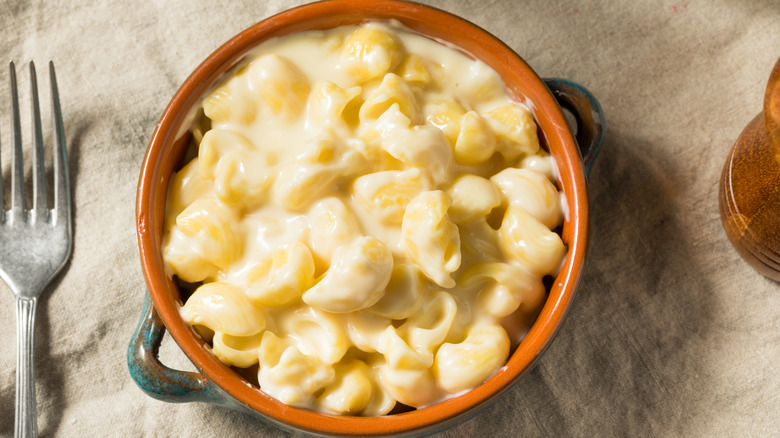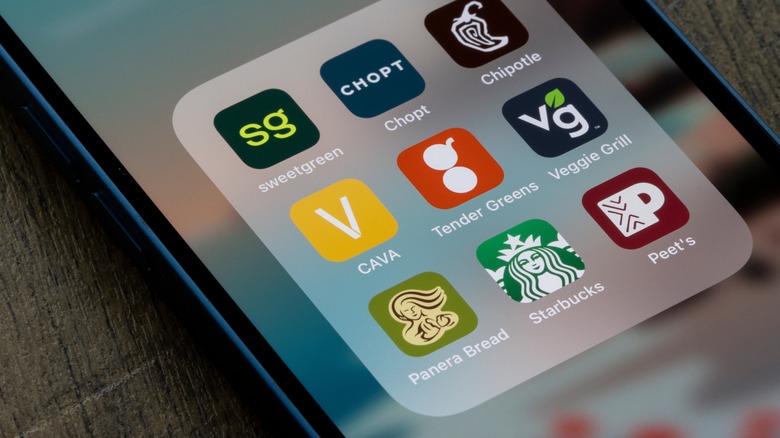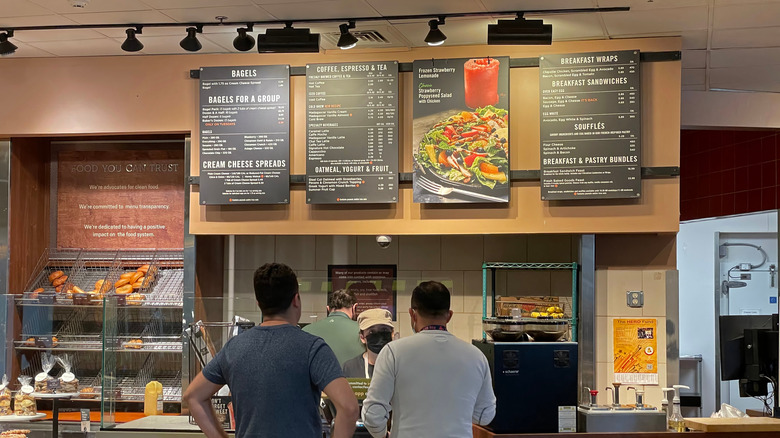Panera's Frozen Mac And Cheese Controversy
"Clean" is a big thing for Panera's image. The company made its decision to go clean back in 2015. By the end of 2016, says MarketWatch, the chain had revised 122 ingredients and professed to carry only 100% "clean" foods. Panera even published a "No No List" of almost 100 ingredients it vowed never to use. The Panera website defines "clean" ingredients as having no artificial flavors, preservatives, sweeteners, or coloring. They serve cage-free eggs and chicken raised without antibiotics.
A large part of Panera's self-professed commitment to clean eating includes choosy sourcing. In 2017, after the switch, Founder, Chief Executive, and Chairman Ron Shaich explained the challenges such a radical upheaval presented. "We had to break down each ingredient," said Shaich, "and in many cases that meant questioning not only our supplier but our supplier's supplier." Per the change, some ingredients suddenly had a much shorter shelf life, so Panera had to revise its food safety measures to preserve these new ingredients differently.
The policy stands in stark contrast to the vats of frying oil that probably come to mind for many consumers when they hear the words "fast food." But, while you won't find any greasy deep-fryers in a Panera kitchen, you will find frozen mac and cheese. While the company considered this dish clean, some people treated the use of freezing like a dirty secret that emerged as the subject of major controversy.
A viral TikTok claimed to expose Panera
Ever wonder how Panera makes its mac and cheese? A viral TikTok captioned "exposing [P]anera" obliterated any enduring illusions of gastronomic grandeur in the hearts of many Panera fans. The video was posted in 2019 by user @briannaraelenee, and it received 1.2 million likes and nearly 10,000 comments. The TikTok depicts a cardboard box packed with frozen plastic bags of portioned mac and cheese shells and sauce. The plastic bag then gets dropped into a vat of hot water to thaw. After it's heated through, the bag is fished out of the water, cut open with a pair of scissors, and the contents are dumped into a bowl and served.
Perhaps unsurprisingly, comments included such scathing remarks as "Panera is glorified hospital food" and "I trusted you Panera. You let me down." The employee who posted the video was fired for it, reports CBS News. Still, many fans don't seem deterred. According to the outlet, as of 2019, Panera sold over 3 million orders of mac and cheese every single month. However, there are other sides to this controversy.
Common practice in the fast food industry
As unappetizing as the viral TikTok might have initially seemed to some viewers, countless other household-name fast food chains use the same or similar methods of food prep. If you've ever worked at a fast food restaurant before, then you know that heating a menu item in a plastic bag is common practice. According to Insider, Starbucks does it with egg bites, and Taco Bell does it with ground beef.
In a statement to Today, a New Jersey-based Panera manager referred to the practice as "sous vide," and it's a solid move for avoiding food poisoning; Vacuum-sealed packaging keeps out pathogens and bacteria. Chipotle actually adopted the method as a food safety measure for fully cooking meat after its infamous E. coli outbreak. At the time of the viral TikTok scandal, a Panera spokesperson told Today that the mac and cheese is made off-site and then "shipped frozen to our baker cafes – this allows us to avoid using certain preservatives that do not meet our clean standards." Enter: frozen, pre-made mac and cheese.
Whether the explanation is satisfactory or an appetite deflator is up to you to decide. Several comments on the original TikTok expressed an immediate (if slightly indifferent) acceptance. "I mean.. am I still gonna eat it tho? Yuh." wrote one user. Other votes of ambivalent approval include "Still slaps" and "Low key I don't mind."
Does Panera's promise of clean food mean fresh food?
Under a page labeled "Beliefs" on Panera's website, the fast food chain says "We believe Clean food tastes better ... We want to empower our guests to make informed choices about their food." Admittedly, "clean" eating and "fresh" eating are two different standards. The Mayo Clinic defines "clean eating" as "eating foods that are as close as possible to their natural state." That means minimizing processing from farm to table, since overprocessing strips foods of their natural nutritional content. By following this policy, the focus organically (pun intended) shifts away from greasy fried foods toward fresh fruits and veggies, lean proteins, whole grains, and whole dairy.
Panera supplies its own definition of "clean," which doesn't specifically promise that the food will be as close to natural as possible. Instead, "clean" means the foods don't contain artificial ingredients that are described as no-nos by the company. The chain provides a detailed list of ingredients for the mac and cheese on its website, which does not present the item as freshly made. Yet, since the sourcing for ingredients in Panera's mac and cheese is unclear, it's also unclear whether the mac adheres to the chain's "selective sourcing" policy, which takes into account factors like how fresh an ingredient is and where it came from.



